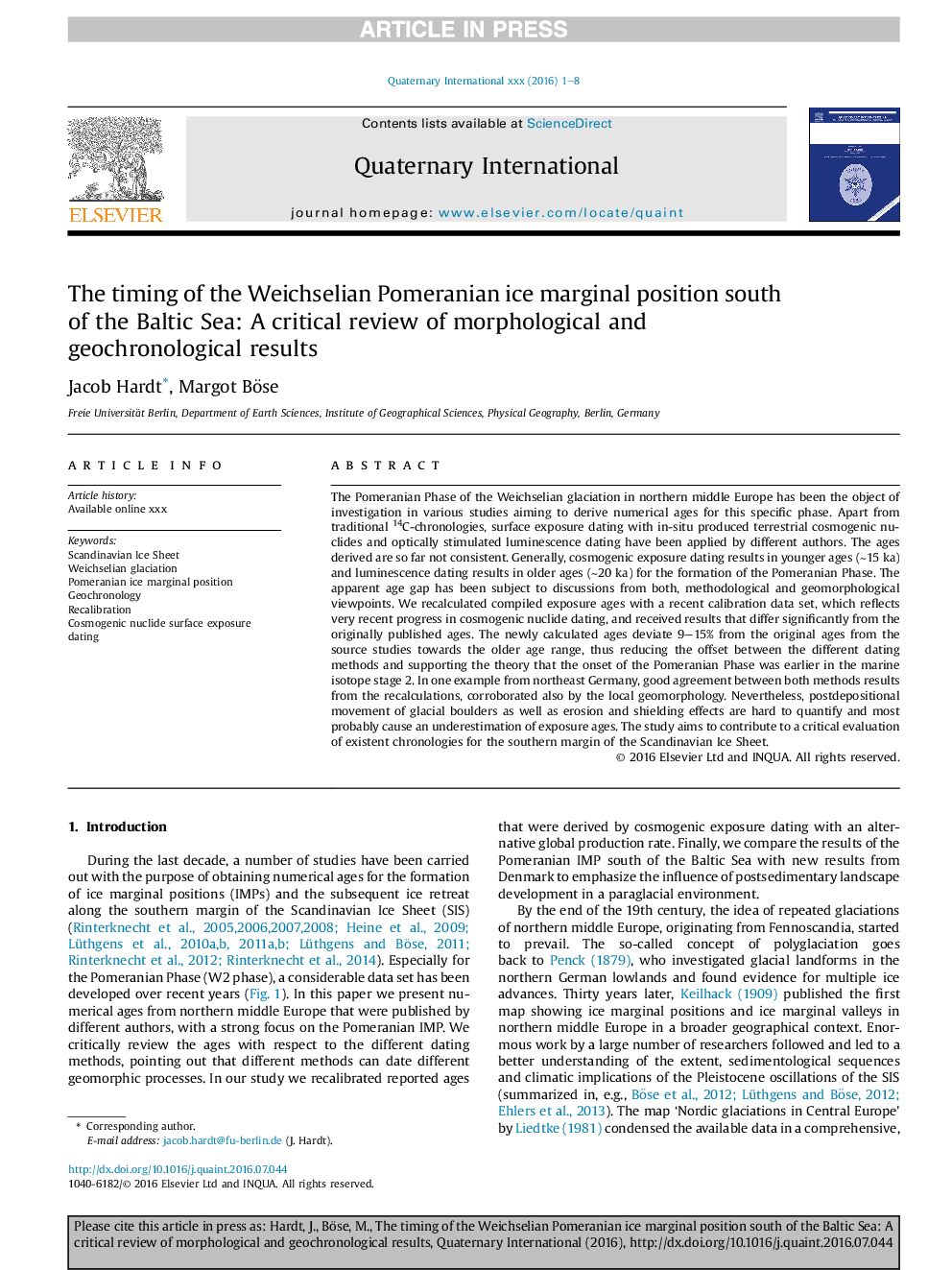| Article ID | Journal | Published Year | Pages | File Type |
|---|---|---|---|---|
| 7449466 | Quaternary International | 2018 | 8 Pages |
Abstract
The Pomeranian Phase of the Weichselian glaciation in northern middle Europe has been the object of investigation in various studies aiming to derive numerical ages for this specific phase. Apart from traditional 14C-chronologies, surface exposure dating with in-situ produced terrestrial cosmogenic nuclides and optically stimulated luminescence dating have been applied by different authors. The ages derived are so far not consistent. Generally, cosmogenic exposure dating results in younger ages (â¼15Â ka) and luminescence dating results in older ages (â¼20Â ka) for the formation of the Pomeranian Phase. The apparent age gap has been subject to discussions from both, methodological and geomorphological viewpoints. We recalculated compiled exposure ages with a recent calibration data set, which reflects very recent progress in cosmogenic nuclide dating, and received results that differ significantly from the originally published ages. The newly calculated ages deviate 9-15% from the original ages from the source studies towards the older age range, thus reducing the offset between the different dating methods and supporting the theory that the onset of the Pomeranian Phase was earlier in the marine isotope stage 2. In one example from northeast Germany, good agreement between both methods results from the recalculations, corroborated also by the local geomorphology. Nevertheless, postdepositional movement of glacial boulders as well as erosion and shielding effects are hard to quantify and most probably cause an underestimation of exposure ages. The study aims to contribute to a critical evaluation of existent chronologies for the southern margin of the Scandinavian Ice Sheet.
Related Topics
Physical Sciences and Engineering
Earth and Planetary Sciences
Geology
Authors
Jacob Hardt, Margot Böse,
